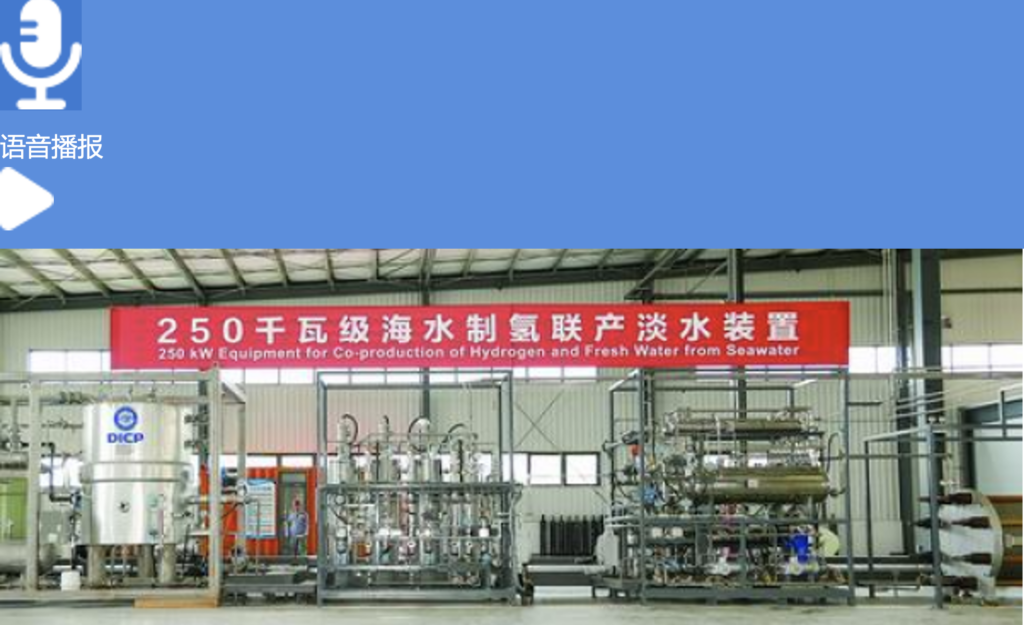https://h2.in-en.com/html/h2-2438799.shtml
A 250-kilowatt seawater hydrogen production and desalination device was developed by the team of Deng Dehui and colleagues at the CAS Dalian Institute of Chemical Physics, Chinese Academy of Sciences.
Hydrogen production based on renewable energy is an important way to achieve a green hydrogen economy. Due to the shortage of freshwater resources, seawater hydrogen production is the key development direction of the hydrogen energy industry in the future, and seawater hydrogen production has become a global research hotspot. However, the complex composition of seawater leads to many difficulties and challenges in seawater hydrogen production, such as poor catalyst performance, membrane clogging, and short equipment life. It is urgent to develop new technologies and equipment for hydrogen preparation using seawater as raw materials.
Deng Dehui’s team used low-grade waste heat generated by water electrolysis as the heat source for low-temperature distillation of seawater to produce fresh water, created a waste heat recovery and utilization system, coupled and integrated the alkaline water electrolysis hydrogen production with the seawater low-temperature desalination technology. They built a 25-kilowatt device based on armor catalysts, which can produce high-purity hydrogen from seawater as raw materials and co-produce fresh water and high-value-added concentrated seawater.
In order to accelerate the industrial application of this technology, the team optimized the process and intelligent control system on the basis of the previous work, and completed the system amplification effect investigation. Recently, a 250-kilowatt seawater hydrogen production and fresh water co-production device was built and successfully started. The device is running smoothly, with a seawater treatment capacity of 600 tons/year, a hydrogen production capacity of 400,000 standard cubic meters/year, and a hydrogen purity of ≥99.999%. The fresh water produced not only meets its own electrolysis needs, but also produces an additional 120 tons/year of fresh water, with a fresh water salinity of ≤40ppm, and a by-product of 150 tons/year of high-value-added concentrated seawater.

